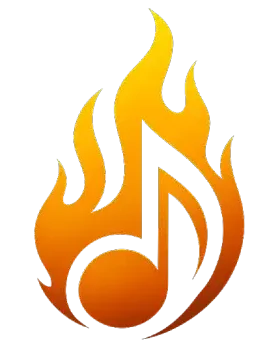Guitar Chord Finder: The Ultimate Guide for Musicians
Imagine being inspired on stage while you reach for a chord you can’t reach. Perhaps you’re in your home studio, hearing a progression but unable to play it. Beginners and pros encounter these musical obstacles. The guitar chord finder, your musical detective, will solve fretboard puzzles and expand your harmonic vocabulary.
Whether you’re analyzing a difficult jazz voicing, planning your next composition’s development, or expanding your chord vocabulary, these digital aides have changed how we use our instruments. Discover guitar chord analyzers, how they function, and how they may transform your music.
What Is a Guitar Chord Finder?
It is an interactive tool for identifying chord names, learning new voicings, and understanding guitar chord progression. These resources bridge the gap between theory and real-world fretboard application by acting as a reference library and learning aid. Moreover, chord identification is becoming easier with the help of a chord progression analyzer.
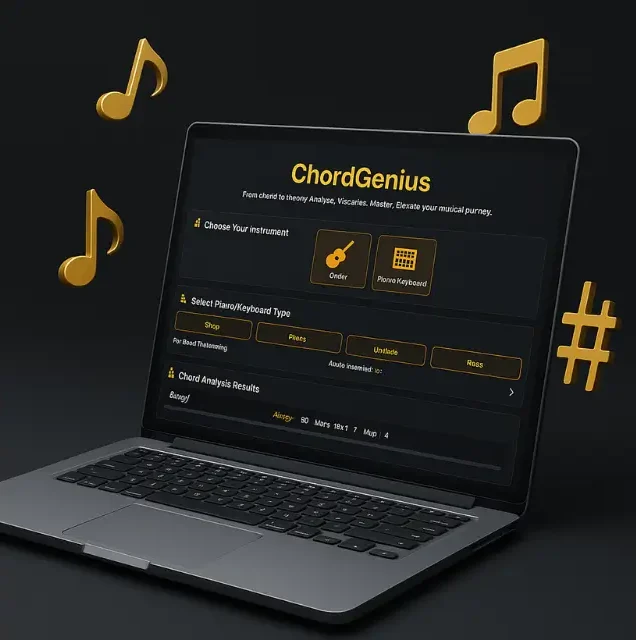
Types of Guitar Chord Finders
The world of chord identification tools spans several categories, each with unique features and capabilities:
| Type | Primary Function | Best For |
| Standard Chord Library | Displays common chord shapes and voicings | Beginners learning basic chords |
| Reverse Chord Finder | Identifies chord names from input notes or fretboard positions | Discovering the names of unfamiliar shapes |
| Interactive guitar Fretboard Tools | Visualizes chord shapes across the entire guitar neck | Understanding chord theory and position relationships |
| Real-time Audio Analyzers | Listens to played chords and identifies them | On-the-fly chord recognition during practice or performance |
| Chord Progression Tools | Suggests compatible chords and progressions | Songwriting and composition |
Popular Guitar Chord Progressions
I-IV-V
C-F-G in C major
Classic blues and rock progression, foundation for countless songs across genres.
I-V-vi-IV
C-G-Am-F in C major
The famous “four-chord” pop progression used in hundreds of hit songs.
ii-V-I
Dm-G-C in C major
Common jazz progression that creates a strong resolution feeling.
I-vi-IV-V
C-Am-F-G in C major
1950s doo-wop progression, classic for ballads and love songs.
vi-IV-I-V
Am-F-C-G in C major
Modern pop progression that creates an emotional, anthemic feeling.
I-V-vi-iii-IV-I-IV-V
C-G-Am-Em-F-C-F-G in C major
Extended progression perfect for creating verse/chorus sections.
I-IV-vi-V
C-F-Am-G in C major
Alternative rock progression with a strong forward momentum.
i-bVI-bIII-bVII
Am-F-C-G in A minor
Epic rock progression commonly used in anthems and power ballads.
I-iii-IV-vi
C-Em-F-Am in C major
Thoughtful, introspective progression with emotional depth.
I-vi-ii-V
C-Am-Dm-G in C major
Jazz-inspired turnaround that creates a satisfying loop.
vi-V-IV-I
Am-G-F-C in C major
Folk progression that creates a storytelling, narrative feel.
I-ii-iii-IV
C-Dm-Em-F in C major
Ascending progression that builds tension beautifully.
i-iv-V
Am-Dm-E in A minor
Minor key pop/rock progression with dramatic feel.
I-V-vi-iii-IV
C-G-Am-Em-F in C major
Expanded emotional progression for more complex songs.
I-bVII-IV
C-Bb-F in C major
Mixolydian modal progression was common in rock and folk.
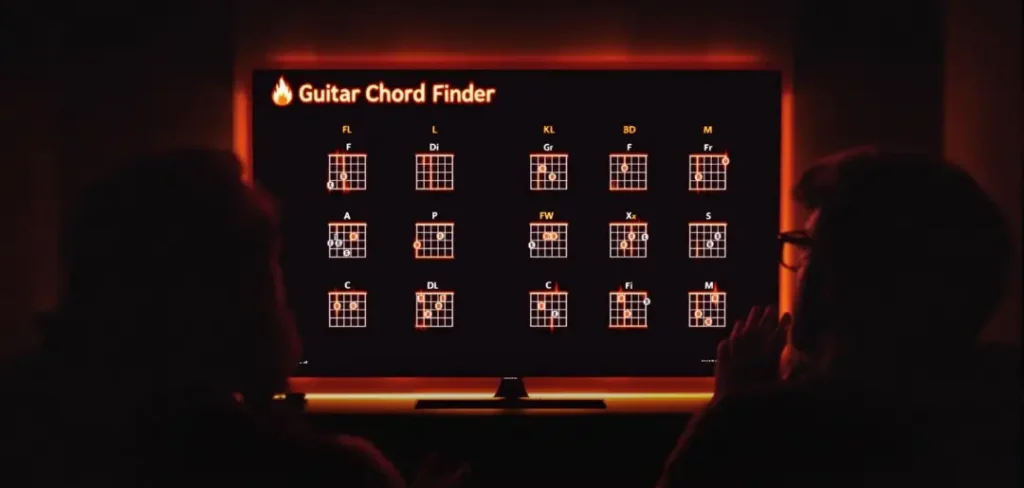
How Best Guitar Chord Finders Work
This tool relies on music theory to determine how notes form chords. The type of chord finder affects its functionality.
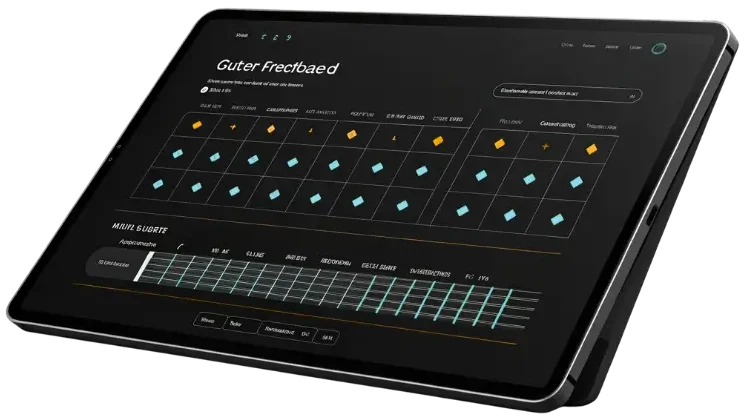
Standard Chord Libraries
These digital encyclopedias contain thousands of preconfigured chord shapes. When you choose a root note and chord type (major, minor, dominant 7th, etc.), the application shows the appropriate finger placements on a virtual fretboard.
Reverse Chord Finders
These tools work backward from your input. You can:
The tool then analyzes these inputs against its database of chord structures to identify the most likely chord name, along with possible alternatives.

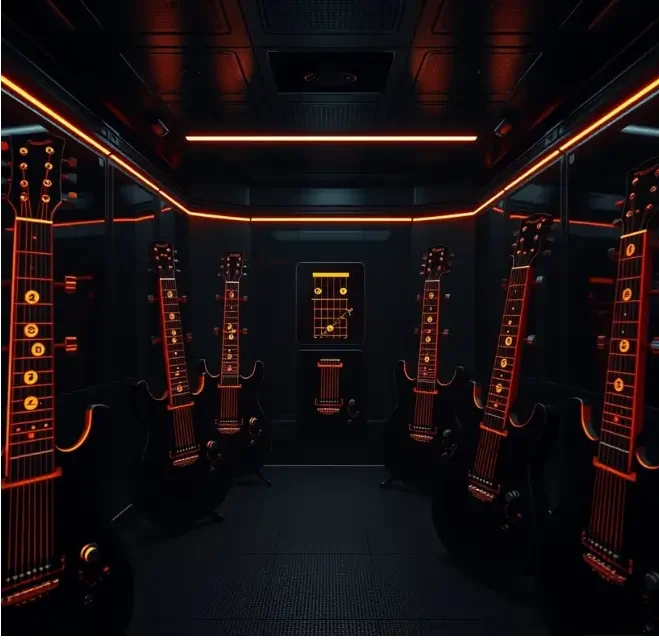
AI-Powered Chord Analysis
Modern guitar and piano chord finder tools incorporate artificial intelligence to
Benefits of Using a Guitar Chord Identifier
Whether you’re a beginner just starting your musical journey or a seasoned pro looking to expand your harmonic palette, chord finders offer substantial benefits:
For Beginners Music Learners
For Intermediate Players
For Advanced Musicians
“The most valuable aspect of modern chord finders is how they democratize music theory. Anyone with a passion for the instrument can now intuitively explore what once required years of formal training.” – Music Education Quarterly

Use of Reverse Guitar Chord Finder
One of the most powerful features of modern chord tools is the ability to work backward from notes to chord names. Here’s how to make the most of this functionality:
Input Your Notes
- Place dots on the virtual fretboard where your fingers are positioned
- Alternatively, select the letter notes if you know them
Review Potential Matches
- Examine the list of possible chord names
- Consider the musical context to select the most appropriate option
Explore Alternative Voicings
- Once you’ve identified the chord, look for other ways to play it
- Compare different positions across the fretboard
Save and Organize
- Create a personal library of discovered chords
- Group them by songs, progressions, or practice routines
Enhancing Your Songwriting with Chord Finders
Beyond identification, these tools serve as powerful allies in the creative process:
Discovering New Progressions
Break out of predictable patterns by exploring:


Voicing Experimentation
Transform simple progressions into sophisticated arrangements by:
Analyze Hit Songs
Use Chord Analyzer to:

“The difference between a good song and a great one often lies in just one or two unexpected chord choices. Online guitar chord finders help you discover those magical moments.” – Songwriting Today Magazine
Guitar Chord Finders for Different Musical Styles
There are numerous chord finders available that will assist you in understanding the harmonic approach of different genres:
Jazz Chord Harmony
Jazz-oriented chord finders emphasize
Folk and Acoustic
Tools for folk chord guitarists focus on:
Rock Music
Heavy music tools highlight:
Classical and Fingerstyle
Dedicated tools offer:
Exploring Alternate Tunings
Standard tuning (EADGBE) is just one of many ways to arrange your guitar strings. Alternate tunings open new sonic landscapes, and specialized chord finders can help you navigate these uncharted territories:
| Tuning | String Arrangement | Common In |
| Drop D | D-A-D-G-B-E | Rock, Metal, Folk |
| Open G | DGDGBD | Blues, Slide Guitar |
| DADGAD | DADGAD | Celtic, Contemporary Acoustic |
| Open D | DADF#AD | Folk, Americana |
| Half-Step Down | EbAbDbGbBbEb | Rock, Metal |
“Alternate tunings aren’t just about different sounds—they’re about discovering new relationships between notes that can transform how you think about the instrument.” – Guitar Exploration Magazine
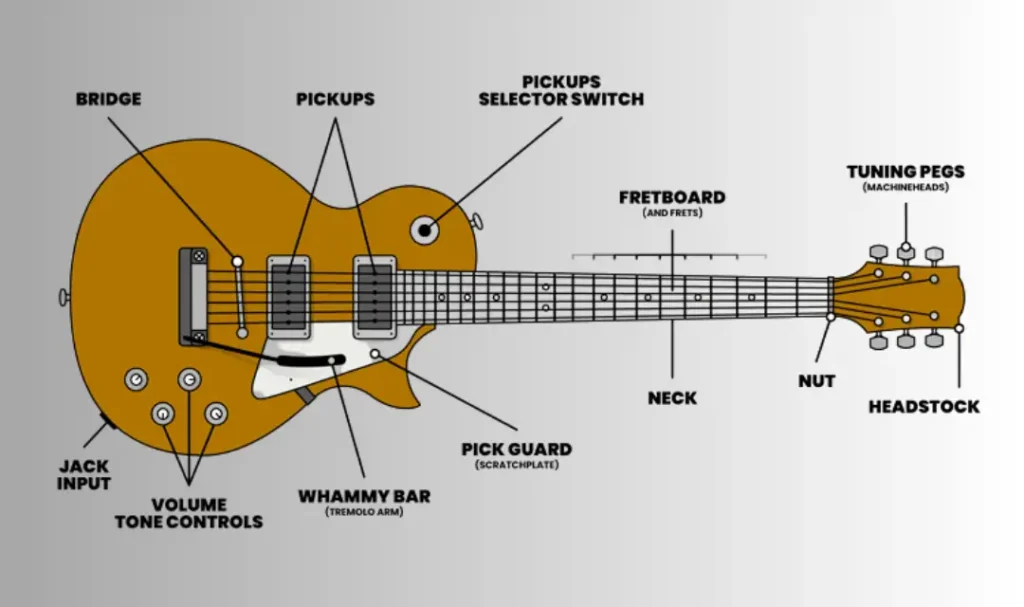
Practical Tips to Find Chords
With these strategic approaches, you can make the most of these powerful tools and make them work for you:
Daily Practice Integration
Creative Challenges
Technical Considerations
Future of Guitar Chord Technology
There is no doubt that chord identification tools are evolving at a rapid pace, with several exciting developments on the horizon, including
AI-Enhanced Learning
Machine learning algorithms are creating increasingly personalized experiences by:
Augmented Reality Integration
Next-generation tools may include:
Conclusion
Guitar chord finders have become essential musical instruments. These digital tools broaden your guitar universe, whether you’re starting or pushing composition after decades. An excellent chord finder can unlock millennia of harmonic understanding and boundless creative possibilities.
The fretboard becomes a canvas for expression, with each chord a color in your musical palette. What chord will you find today? How may your next exploratory session progress? One chord at a time, the adventure continues.
